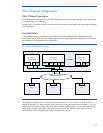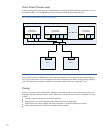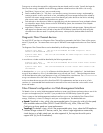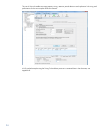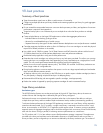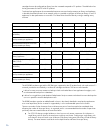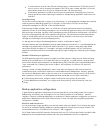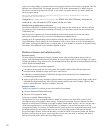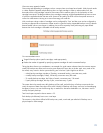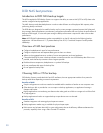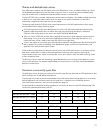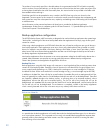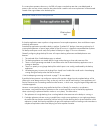
26
cartridges that can be configured per library has also increased compared to G1 products. The table below lists
the key parameters for both G1 and G2 products.
To achieve best performance the recommended maximum concurrent backup streams per library and appliance
in the table should be followed. As an example, while it is possible to configure 40 drives per library on a 4312
appliance, for best performance no more than 12 of these drives should be actively writing or reading at any
one time.
D2D2502 G1
D2D2503 G1
D2D2504 G1
D2D400X G1
D2D4112 G1
Maximum VTL drives per library
4
1
4
4
4
Maximum slots per library (D2DBS)
48
48
48
96
144
Maximum slots (MSL2024, MSL4048,
MSL8096)
24, 48, 96
24, 48, 96
24, 48, 96
24, 48, 96
24, 48, 96
Recommended maximum concurrent
backup streams per appliance
16
8
24
12
24
Recommended maximum concurrent
backup streams per library
4
4
4
4
4
D2D2502 G2
D2D2504 G2
D2D4106/4112 G2
D2D4312/4324 G2
Maximum VTL drives per
library/appliance
16
32
64/96
200
Maximum slots per library (D2DBS,
EML-E, ESL-E)
96
96
1024
4096
Maximum slots (MSL2024, MSL4048,
MSL8096)
24, 48, 96
24, 48, 96
24, 48, 96
24, 48, 96
Maximum active streams per store
32
48
64/96
128
Recommended maximum concurrent
backup streams per appliance
16
24
48
64
Recommended maximum concurrent
backup streams per library
4
4
6
12
The HP D2DBS emulation type and the ESL/EML type, supported on the G2 product family with code revision 2.1
onwards, provide the most flexibility in numbers of cartridges and drives. This has two main benefits:
It allows for more concurrent streams on backups which are throttled due to host application throughput, such
as multi-streamed backups from a database.
It allows for a single library (and therefore Deduplication Store) to contain similar data from more backups that
can run in parallel to increase deduplication ratio.
The D2DBS emulation type has an added benefit in that it is also clearly identified in most backup applications
as a virtual tape library and so is easier for supportability. It is the recommended option for this reason.
There are a number of other limitations from an infrastructure point of view that need to be considered when
allocating the number of drives per library. As a general point it is recommended that the number of tape drives
per library does not exceed 64 due to the restrictions below:
For iSCSI VTL devices a single Windows or Linux host can only access a maximum of 64 devices. A
single library with 63 drives is the most that a single host can access. Configuring a single library with
more than 63 drives will result in not all devices in the library being seen (which may include the library
device). The same limitation could be hit with multiple libraries and fewer drives per library.




